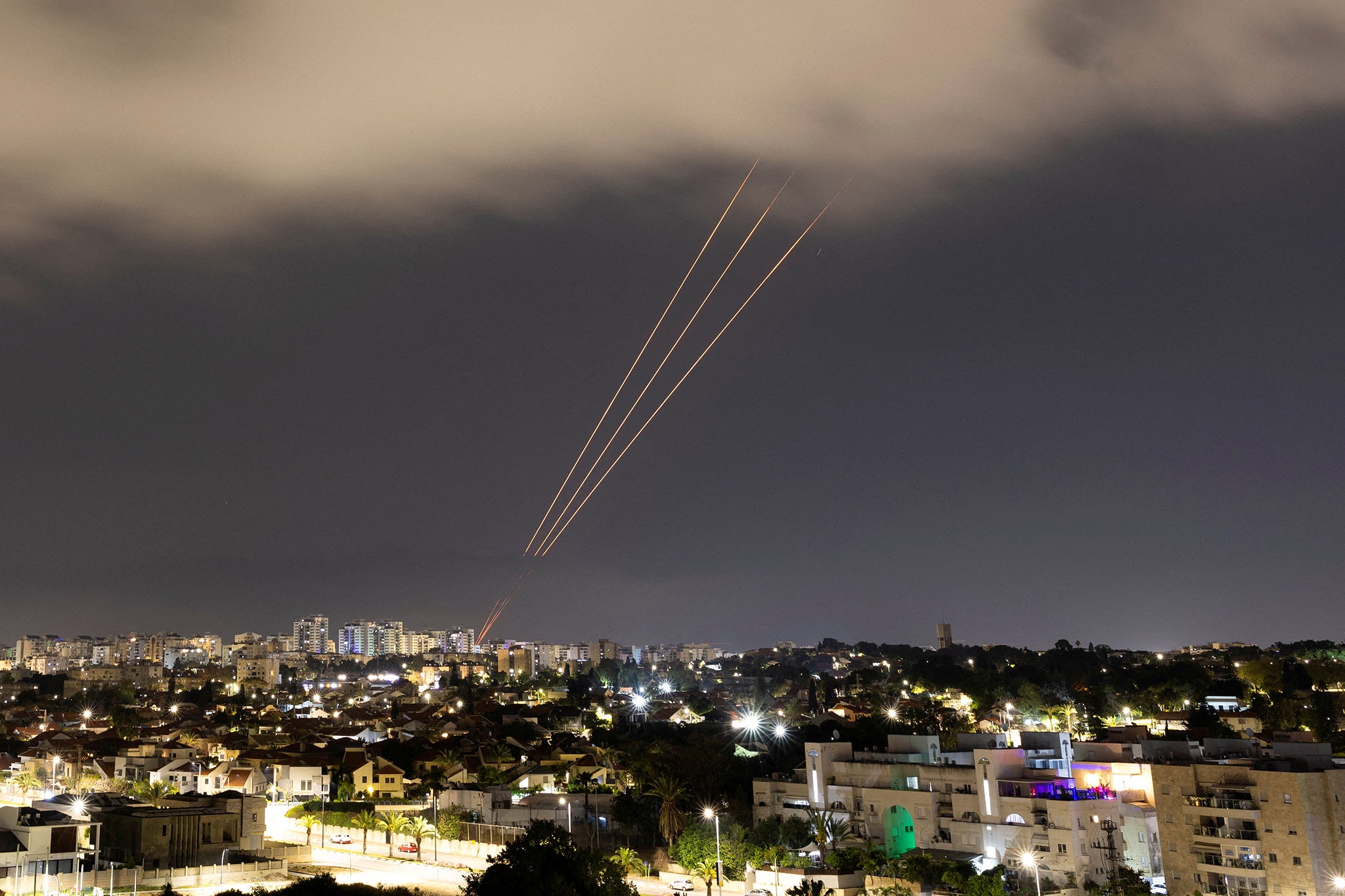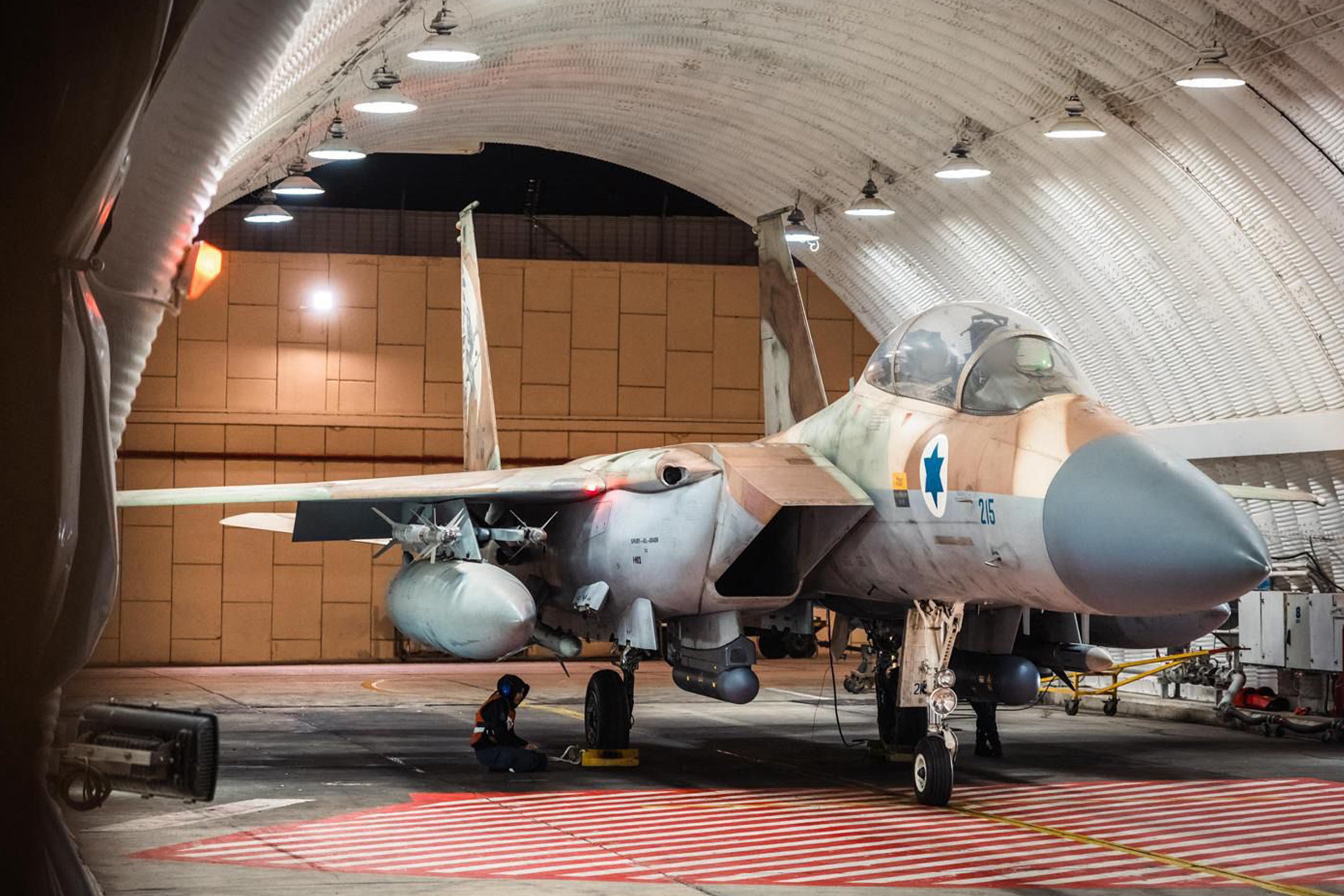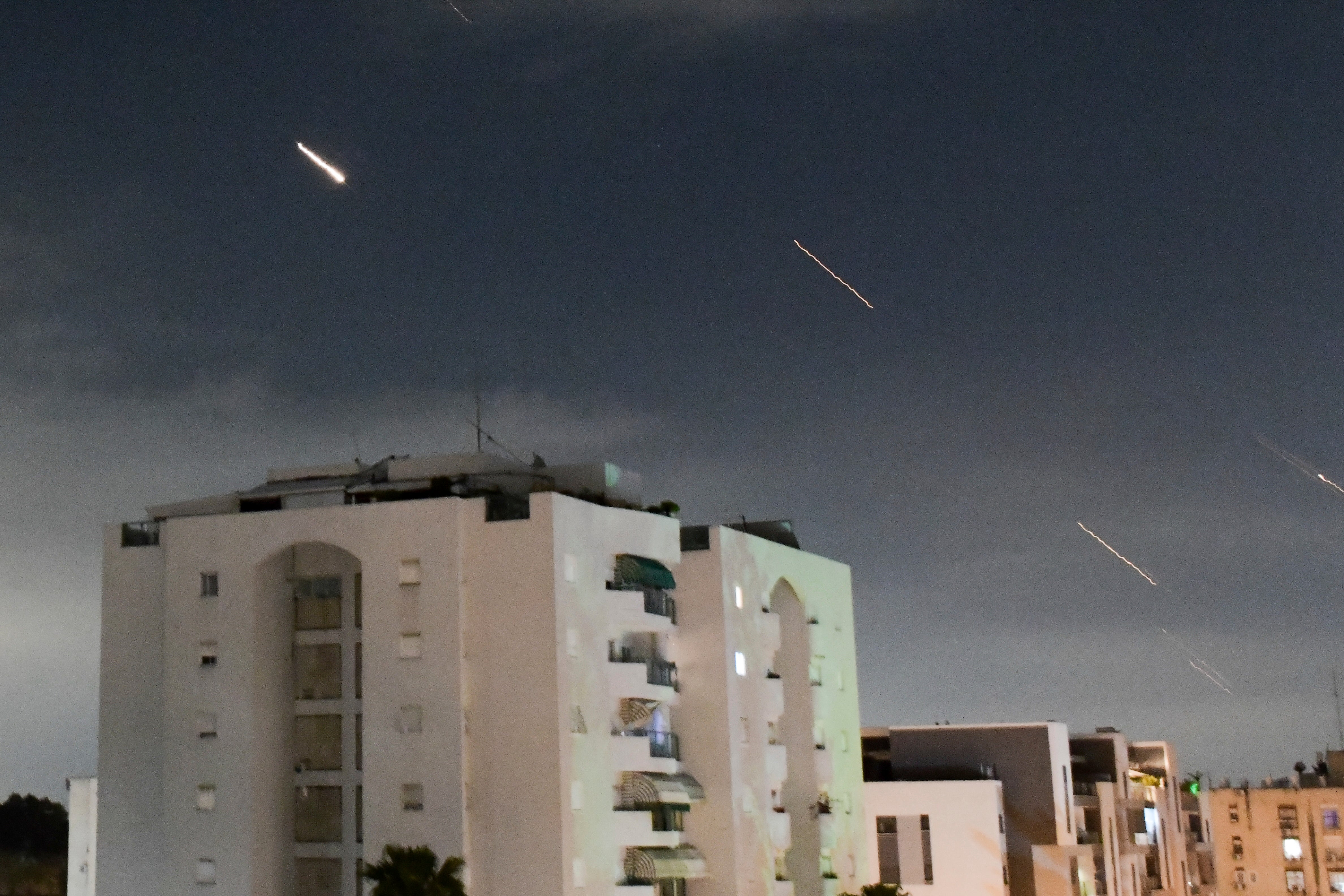How Israel’s air defence repelled Iran’s unprecedented drone and missile attack
How Iran’s major assault with drones and missiles unfolded - and how Israel successfully repelled almost all of it
Your support helps us to tell the story
This election is still a dead heat, according to most polls. In a fight with such wafer-thin margins, we need reporters on the ground talking to the people Trump and Harris are courting. Your support allows us to keep sending journalists to the story.
The Independent is trusted by 27 million Americans from across the entire political spectrum every month. Unlike many other quality news outlets, we choose not to lock you out of our reporting and analysis with paywalls. But quality journalism must still be paid for.
Help us keep bring these critical stories to light. Your support makes all the difference.
When Israel brazenly bombed an Iranian consulate in Syria earlier this month, killing several of the country’s top commanders, weeks of speculation ensued over how Iran would respond.
By Wednesday, the US had warned a retaliatory Iranian attack was imminent. At around 11pm local time on Saturday night, word spread across Israel that hundreds of Iranian drones and missiles were on their way - and would enter Israeli air space in a matter of hours.
An agonising, terrifying wait ensued - as the well-telegraphed attacking force made its 620 mile plus journey across Middle Eastern skies. Iran’s Shahed drones - the type believed to have been used - travel at around 110mph to 370mph, depending on the model.
Many Israelis sought shelter, bringing bottled water and food supplies to their safe rooms or travelling to stay with relatives who had access to bomb shelters. Others tried to carry on as normal - all too accustomed to the sound of sirens during the past six months of war, resigned to placing faith in Israel’s sophisticated aerial defence setup.
Almost one hour after the drones set off, a group of ballistic missiles capable of flying multiple times the speed of sound were launched from Iran, with the intention of both drones and missiles hitting Israel at the same time, Iran’s Revolutionary Guards Corps (IRGC) said.
The Iranian attack was further reinforced by missiles launched at Israel by its proxy groups, including Houthi militants in Yemen, and other groups in Syria and Iraq, according to US President Joe Biden.

As alarm spread across the country, Israel’s high-tech air defence system mobilised to intercept the attack, whilst Israel’s air force - working with allies including the UK and US - launched planes to shoot down some of the incoming weaponry before it reached the country.
This multi-pronged defensive operation has been widely seen as a success. 99% of the Iranian missiles and drones were shot down, according to the Israeli military.
In total, the attack comprised of 170 drones and 30 cruise missiles, all of which were intercepted before reaching Israeli territory, as well as 110 ballistic missiles, of which a small number reached Israeli territory, military spokesman Rear Admiral Daniel Hagari said in a statement.
The only reported casualties were two children from Bedouin communities who were injured, one seriously. The Nevatim Airbase in the Negev desert also suffered damage.
What does Israel’s air defence system look like?
A key component of Israel’s aerial defence is the Arrow system, comprising of Arrow-2 and Arrow-3. It specialises in downing long-range missiles - and is designed to intercept them outside the earth’s atmosphere. It has already been used during the current war to shoot down missiles fired by Houthi militants. On Saturday, it was mobilised to shoot down Iran’s ballistic missiles.
Israel’s flagship air defence system is the infamous Iron Dome, which is designed to intercept short-range rockets of the type used by Hamas. Developed alongside the US, it has shot down thousands of rockets since it was rolled out in 2011 - and was seen in action across Israel during Saturday’s attack.
David’s Sling - operational since 2017 - is designed to intercept medium-range, heavy payload missiles, such as those stocked by Hezbollah in Lebanon.
The oldest component of Israel’s air defences is Patriot, which was first used during the First Gulf War to intercept missiles fired by Saddam Hussein’s forces. Nowadays, Patriot is used to shoot down aircraft, including drones.
These four branches of Israel’s air defence are backed up by Israeli Air Force jets - which on Saturday intercepted 25 cruise missiles “outside the country’s borders”, according to military spokesperson Daniel Hagari.

Israel’s allies played a key role
Israel’s allies also played a key role in stopping the attack.
The US and UK had bolstered their military presence in the region in the days leading up to the attack, after receiving advanced intelligence of Iran’s intentions.
On the night, US forces intercepted a number of Iranian drones over southern Syria, security forces told Reuters. US President Joe Biden said the US had helped to “take down nearly all” of the Iranian drones and missiles.
Royal Air Force Typhoon jets shot down a number of Iranian drones over Syria and Iraq, UK Prime Minister Rishi Sunak said. The RAF was already operating in the area as part of Operation Shader, the UK’s mission to combat Islamic State.
France helped to patrol the airspace around Israel but it is unclear if they had downed any drones or missiles, the Israeli military said.
Additionally, Jordan shot down several Iranian missiles and drones which had entered its airspace. This was to secure the safety of its citizens, a statement from the Jordanian cabinet said. The Jordanian intervention is notable as it has been a heavy critic of Israel’s conduct during its war in Gaza, though it remains a close US ally.

A measured, telegraphed - but powerful attack
Crucially for Israel, Iran’s attack was well-telegraphed. The country’s foreign minister Hossein Amirabdollahian said Sunday it had given neighbouring nations 72 hours’ notice.
Intelligence of Iran’s plans may have been leaked intentionally to allow Israel to prepare, thus enabling Iran to launch a large and symbolic attack whilst minimising mass casualties and damage that could spark a serious further escalation.
Nonetheless, the size and awe of the attack seemed designed to demonstrate that Iran has the capability to overwhelm Israeli air defences should it truly wish to - though the effectiveness of Israel’s defence may have been beyond Tehran’s expectations.
In an eyewatering insight into the cost of the defensive operations, Brig Gen Reem Aminoach, a former economic adviser to the IDF chief of staff, told Israel’s Ynet News, that the cost of the air campaign - including the missiles used to shoot down Iran’s ballistic missiles - would add up to around “4 to 5 billion shekels (£850m to £1.1bn)”.
Subscribe to Independent Premium to bookmark this article
Want to bookmark your favourite articles and stories to read or reference later? Start your Independent Premium subscription today.

Join our commenting forum
Join thought-provoking conversations, follow other Independent readers and see their replies
Comments